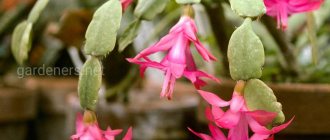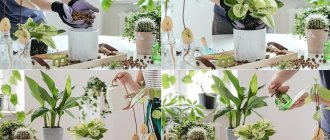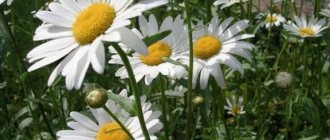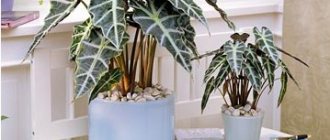Household, flowering plants look beautiful. Lush greenery, bright flowers, fragrant aroma, delight the eye. One day, for unknown reasons, they stop blooming, begin to wither, or, worse, die.
Home flowers. The illustration for the article is used from open sources.
Content
- 1. Bouquets in pots - chic, but short-lived
- 2. Daylight hours are too short/long
- 3. The soil is not suitable
- 4. Transplant deadlines were violated
- 5. Lack of humidity
- 6. Excess/lack of fertilizers
- 7. Not observing the rest period
- 8. Other factors
- 9. A few final tips
In nature, plants regularly bloom at exactly the right time, regardless of the vagaries of the weather.
So why do they refuse to bloom indoors, where they are protected and cared for? The life of each plant is subject to the program laid down by nature. From the moment the sprout appears, the vegetative period begins, characterized by the formation of shoots and leaves. Depending on the genus and species of the flower, this stage can last from several weeks to ten years. And only after its completion, the plant, which has grown and gained strength, is ready to flower. For example, Violet needs no more than 2 months to do this, while for Ekhmeya the process takes about 3 years.
Buying a flowering plant is a great way to acquire a fully grown and mature specimen. It seems that if this flower managed to survive in a store, then at home, with love and care, it will definitely not be in danger. However, time passes and, contrary to expectations, new buds do not appear, despite the efforts made by the owner. What's the matter? The reasons may vary.
Reasons why Decembrist does not bloom at home
Problems with the microclimate
Schlumbergera is a representative of the tropics. In order for her to feel comfortable in a city apartment, far from her natural habitat, you need to create an environment close to the climate of a humid and warm forest. Zygocactus loves diffused sunlight, so you need to take care of a suitable place for it.
Even in summer, the plant reacts painfully to direct and intense sunlight, so it is better to protect the surface of the leaves from such light.
Although the Decembrist is a cactus, it is acutely sensitive to a lack or excess of water. To maintain optimal conditions for plant development, you need to carefully monitor the temperature and humidity level in the room. Schlumbergera is a succulent, which means it can store water in special tissues, but this is not enough.
Developed aerial roots solve this problem - they absorb liquid from the air. To achieve a favorable microclimate, you can place the container with the flower on wet gravel or expanded clay.
Watering should be moderate and should be done only after the top layers of the soil have dried. Settled water at room temperature is ideal. It would also be useful to spray the plant, as well as a warm shower once a week.
Schlumbergera needs fresh air circulation, so it is not grown in stuffy or poorly ventilated areas. Maintaining a favorable background is a necessary condition for the active growth of zygocactus.
No rest period
Even if an ideal microclimate is created for the Decembrist, it may not please its owner with lush flowering. This happens because temperature and humidity indicators must change at different periods of time. With the arrival of late autumn, Schlumbergera slows down its metabolic processes, as preparation for the energy-consuming period of flowering begins.
At this time, you need to reduce watering and place the pot with the plant in a dark place to limit the amount of light it receives. The Christmas tree will not experience stress about this if you reduce the volume of spraying and fertilizing gradually, before stopping them altogether.
The optimal temperature for the plant during this period is 12-14°C.
Such events will help the Decembrist prepare for the flowering phase, and on the eve of the holidays he will be able to release the long-awaited buds.
Wrong potty
In order for the Christmas cactus to bloom magnificently, you do not need to choose a larger and wider flowerpot, guided by the fact that it needs a lot of space to grow. Schlumbergera has a small and loose root system, so it is advisable to choose a medium-sized flower pot - not too tall so that the plant does not spend all its energy filling the free space, but not too narrow so that it has room to grow.
The soil for the Christmas tree can be taken from the garden plot or you can buy a special substrate for cacti - this is not so important. The main thing is to apply proper fertilizers and make a good drainage system to remove excess moisture and protect the roots from rotting.
Injured during transplantation
The Christmas cactus has a very fragile root system, so replanting can result in stress for the indoor plant. After any manipulations, it is necessary to provide the Decembrist with peace and give him time to adapt to new conditions.
Schlumbergera is not watered for 3-4 days after transplantation - this is necessary so that the injured roots heal. Feeding is stopped for a period of 1 to 2 months. The pot with the plant is placed in a shaded and cool place until it returns to normal and begins to sprout new leaves and shoots.
If the roots of the Decembrist have suffered from concentrated fertilizers or hypothermia, another transplant may be necessary.
Diseases and pests
Despite the fact that zygocactus is quite resistant to fungal diseases, they can still be an unpleasant find for any gardener. The pathogens of late blight and phythium penetrate the soil and infect it, causing the already weak root system of Schlumbergera to suffer.
The first signs of diseases can be seen at the root part - plant segments in this zone change color, wither and fall off.
Fusarium pathogens enter the plant through affected areas on leaves or stems. The flower becomes pale, withers and loses segments. If you treat the resulting wounds with wood ash, the entrance to harmful microorganisms will be sealed.
To treat a Decembrist already infected with fungal diseases, various fungicides are used.
Parasitic insects also cause a lot of inconvenience - the plant begins to grow poorly, fades and withers. A sudden coating of rust on the shoots is a trace of spider mites, which appear on the Christmas tree due to lack of moisture. Mealybugs are another pest that leave behind white clumps that look like cotton wool.
To combat these parasites, various drugs are used - Neoron, Aktaru, Fitoverm.
If the Decembrist is covered with small brown dots, then the problem is with scale insects - small insects that suck the juice from the leaves. To get rid of them, you need to wipe the leaves well with a soapy cloth and spray them with an insecticidal agent.
Another unpleasant insect is the mite, which causes the leaves to die and yellow and black spots to appear on them. Pests can only be seen with a magnifying glass. If mites are found, wipe the zygocactus leaves with a soapy sponge and wash with hot water (50°C).
The buds and flowers are cut off, and the plant is sprayed with insecticides.
The Christmas tree requires constant attention - regular inspection of the plant will help identify parasites or diseases that have not yet caused irreparable harm.
Constant rearrangement of the flower
Schlumberger is capricious about moving from place to place; for this plant, you need to create favorable conditions and leave it alone. Even turning the pot can have a negative impact on the Christmas cactus, especially during the active flowering phase.
Little fertilizer or watering
Zygocactus does not need fertilizer during bud opening and dormancy, but from February to September, fertilizing is necessary to saturate the plant with nutrients.
In addition, mineral compositions and complex mixtures help the sensitive Decembrist painlessly adapt to changing climatic conditions. A lack of vitamins and moisture can negatively affect the intensity of flowering.
Rare transplant
The most favorable time to transplant Schlumbergera is immediately after flowering, usually at the end of February. Young plants are replanted every year for the first 3 years. Afterwards, transplantation is carried out every 4-5 years or as needed. Decembrist grows slowly, so sometimes it is enough just to carefully replace the top layer of soil in the flowerpot.
Bouquets in pots - chic, but short-lived
Often indoor plants are not designed to bloom again. First of all, this applies to “potted bouquets”. On the eve of the holidays, luxurious flower arrangements in attractive containers appear in stores. Such Chrysanthemums, Cyclamens, Roses bloom for a short time or for a long time, but always once. They then face the fate of traditional cut flower bouquets.
IN THE PHOTO: Blooming cyclamen is a good gift for any holiday
Daylight hours are too short/long
Flowering is directly dependent on lighting. It is very important to provide the plant with enough light. At the same time, you should not overdo it with intensity; most indoor flowers react extremely negatively to direct sunlight. The lack of natural light can be compensated for by artificial lighting - fluorescent lamps. The length of daylight hours is of fundamental importance. So Azalea, Begonia, Kalanchoe can bloom only when the day gradually shortens. However, you should not wait for Calceolaria or Hibiscus flowers to appear if the light reaches the plant less than 12 hours a day. Insufficient lighting can be judged by the appearance of the flower: the stem becomes thinner and elongated, the distance between the leaves increases.
IN THE PHOTO: Calceolaria needs a 12-hour day of light
Watering in one place
Watering the plant always in the same place is a mistake. Flowers must be watered until water begins to come out of the drainage hole in the pot, and at the same time pour water evenly over the entire surface of the earth, and not over the same area.
The main task is to make sure that the entire root system receives the necessary moisture. If you only water one side—especially for larger plants—the roots on the other side may not receive any water at all. It is not surprising that this half will begin to die over time.
The soil is not suitable
Sometimes failure to bloom is not a whim of the plant, but a reaction to inappropriate acidity of the soil mixture. It must be taken into account that Hydrangeas, Azaleas and Callas are best suited to acidic soils with a pH value no higher than 5.0. However, the flowering of Fuchsia planted in soil with a pH value less than 5.5 is in question. In turn, Chrysanthemums and Roses delight with the appearance of flowers exclusively in neutral soil mixtures (pH 6.5–7.5). Problems can also be caused by decomposed substrate or soil salted from watering with hard water.
IN THE PHOTO: Fuchsia prefers slightly acidic soil with a pH less than 5.5
Too early or late transplant
Transplanting into another pot should not happen just because the plant has “grown” from the previous one. This should also be done in order to change the soil mixture and make sure that the flowers receive the necessary nutrients.
If the time has come to change the pot due to a change in size, you should not buy a new huge one. Otherwise, the plant will “float” in the soil, which can lead to waterlogging and rotting of the roots. It is better to increase the size of the pot gradually - let it be 2–5 cm wider than the previous one.
Experts also advise replanting the plant when it becomes noticeable that the roots begin to grow from the bottom of the pot or the development of the flower slows down significantly. If growth is fine, it is better to trim the leaves and stems rather than change the pot.
Transplant deadlines were violated
Often, an indispensable condition for the flowering of a houseplant is replanting. However, moving to a new pot must be carried out within a strictly defined period. A flower that is disturbed at the wrong time can get sick and even die. Also, when choosing a container, you should take into account the personal preferences of the plant. For example, most Orchids feel more comfortable and bloom more willingly in cramped pots. When replanting, care should be taken not to injure the roots. Violation of watering rules causes rotting of the root system, which also prevents the appearance of flowers.
IN THE PHOTO: A pot that is too spacious does not contribute to the rapid flowering of an orchid
Carry out therapeutic and preventive measures
Indoor flowers are more often exposed to viral diseases and pest attacks than garden flowers. This is due to uneven watering, drafts, high humidity, and heat. Therefore, it is recommended to do preventive work, because the treatment process can become complex and protracted, because the emerging virus is gradually able to infect the plants one by one. Fungicides, charcoal, and means for increasing crop immunity are well suited for treatment.
Houseplants. The illustration for the article is used under the standard license ©delniesoveti.ru
It is recommended to apply complex fertilizers for flowering plants. Most amateur flower growers forget about fertilizing home crops, and then wonder what happened to the flowers and why they withered. Fertilizers are most often applied in spring and summer, when the active growth stage of the flower begins, no more than 2 times a month. This will help the plant feel comfortable. It is important to remember the concentration of the product, since an overdose can cause a burn to the root system.
Lack of humidity
It happens that plants refuse to bloom due to low indoor humidity. The indigenous inhabitants of the tropics - Vanda, Lycasta, Medinilla - are especially “picky” in this matter. Even periodic spraying is not able to satisfy their requirements. Growing such plants involves installing air humidifiers.
IN THE PHOTO: High humidity is the key to lush flowering of Medinilla
Spathiphyllum pests
Another reason why your favorite flower of female happiness does not bloom is pests. Spider mites or aphids that have settled on the leaves feed on the sap of the plant, which is why the flower does not have enough strength to form buds. As a result of the activity of pests, the leaves begin to turn yellow, and the plant may even die. Therefore, you need to periodically inspect the leaves and, if harmful insects are detected, use folk remedies or insecticidal preparations to destroy them.
Excess/lack of fertilizers
Plants that receive insufficient or excessive amounts of fertilizer do not bloom. Without fertilizers, the flower simply withers, and an overfed one tends to increase its green mass. You should use fertilizer for flowering plants, and in some cases focus on a specific type of flora. In particular, there are special fertilizers for Camellias, Azaleas, Gerberas, Roses and others.
IN THE PHOTO: Fertilizers for azaleas should be applied from spring to autumn
Plant nutritional disorder
Adeniums can also grow on northern windows, but they will bloom only in sunny ones, or with additional lighting.
This point includes situations when the plant is starving, it has not been replanted or fed for several years (perhaps it was planted in very infertile soil), or when it has been fed too much with fertilizers, especially if these fertilizers are not selected correctly. For example, they contain a lot of nitrogen. In such cases, they say that the plant “fattens”—it forms large, juicy green leaves, vigorously grows new shoots, and all its efforts are directed toward the growing season.
Sometimes plants need to gain strength for the next flowering, to increase the mass of the storage organ. For example, cyclamen grow tubers after flowering, storing nutrients for future flowering. Therefore, when the plants fade, cyclamens cannot be immediately cut off and taken to the basement. You need to continue to water the plants little by little, reducing fertilizing, and when the leaves turn yellow and die, cut them off and store the tubers.
Not observing the rest period
In nature, flowers go into a dormant state on their own in order to gain strength for proper flowering. In indoor floriculture, the owner must create relaxation conditions - provide coolness, limit the level of lighting and watering, focusing on the life cycle of a particular plant. Sometimes, for example, when growing Schlumbergera, it is necessary to organize a dormant period twice a year.
IN THE PHOTO: At the end of the dormant period, Schlumbergera begins active budding
We use the group planting method correctly
To create a lush flower garden, landscape designers use group plantings and the “rule of repetition.” Flowers planted in groups create a more abundant blooming pattern and attract more attention. And repeated throughout the site, they create a feeling of thoughtful design. And this rule is the same for both annuals and annuals.
And it is much easier to care for plants planted in groups, because some like more abundant watering (astilbe, hydrangea - water-bearing plants), others do with virtually no watering - escholzia, rudbeckia, seaside armeria. And all crops need fertilizers differently.
Other factors
Even microscopic pests can cause significant damage to plants. A weakened flower has difficulty setting buds, which then, before they have time to open, fall off.
A completely healthy and well-groomed plant can lose its flowers in a matter of minutes. For this, such seemingly minor troubles as a draft or moving a container, or a lack of fresh air, as well as an increased temperature in the room are sufficient.
Getting a plant to bloom is not always easy. However, it is quite possible. All efforts and expenses are paid off by blooming splendor, which no artificial decor can surpass.
The plant does not like the indoor air
Too high humidity or, conversely, dry air, as well as constant drafts interfere with the normal development of the plant, and therefore its flowering. You can control air humidity by spraying, but if the plant suffers from air currents, then it needs to be moved to another place suitable for full development, but at the same time devoid of drafts.
By the way, a houseplant can shed unopened flowers for other reasons. For example, it did not calculate its strength and tied too many buds, which simply did not have enough available moisture. In this case, it simply gets rid of the “extra” colors, which means there is no need to worry. The main thing is to understand that you, as its owner, did everything you could.
A few final tips
- Before you get a houseplant, you should definitely find out where it comes from, what care requirements it requires, and how long to wait for flowering.
- If all the deadlines have passed, but flowering has not yet occurred, you should look for the reason. It is advisable to start with the main indicators: lighting level, humidity. Then move on to determining the condition of the soil and roots, and check the plant for pests.
- It is important to provide the flower with a period of rest.
- Fertilizers containing nitrogen stimulate foliage growth and are best used in the spring. During the appearance of buds and flowering, it is advisable to replace the fertilizer with phosphorus-potassium fertilizer.
- Following the care recommendations will allow you to enjoy the flowering of your indoor plant.
- By changing the length of daylight, reducing or increasing watering, and ensuring a difference in day/night air temperatures, you can stimulate flowering.
Over or under watering
Overwatering is a surefire way to kill a plant. This can cause the leaves to turn yellow and the roots to begin to rot. Therefore, before watering the flower, you should check the soil in the peas. If it is still wet, then water is not needed yet.
The other side of the coin - insufficient watering - can also cause harm. In this case, the leaves turn brown and the roots dry out. Plant “doctor” Gabby Santiago points out another sign: when little water reaches the roots, the plant begins to “sag.” Therefore, if the pot has a drainage hole, you can not be afraid and thoroughly water the soil.
Experts also advise finding out how much moisture the plant receives in its natural habitat and trying to replicate these conditions at home.
You can also buy a special soil moisture meter for indoor plants. It will help you understand when it’s time to water the flowers.











